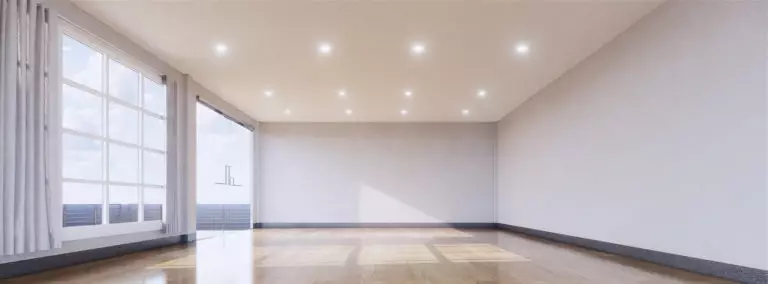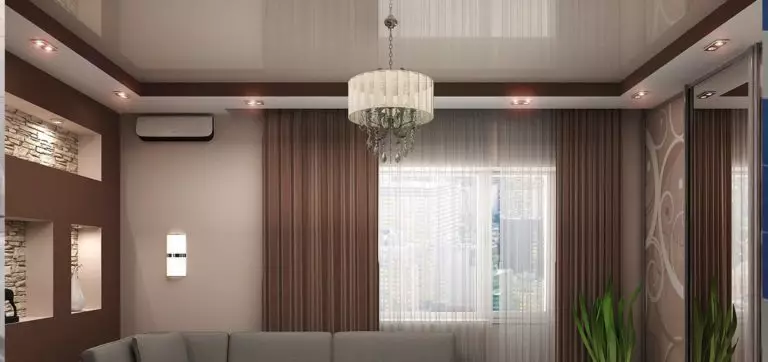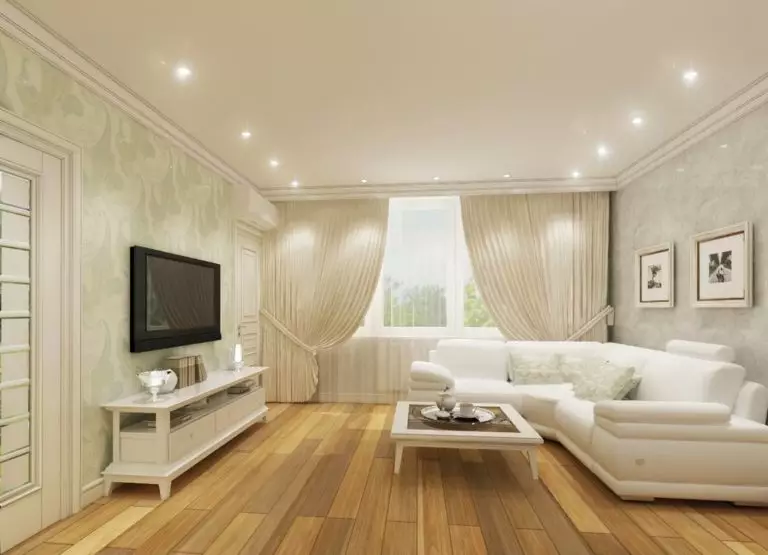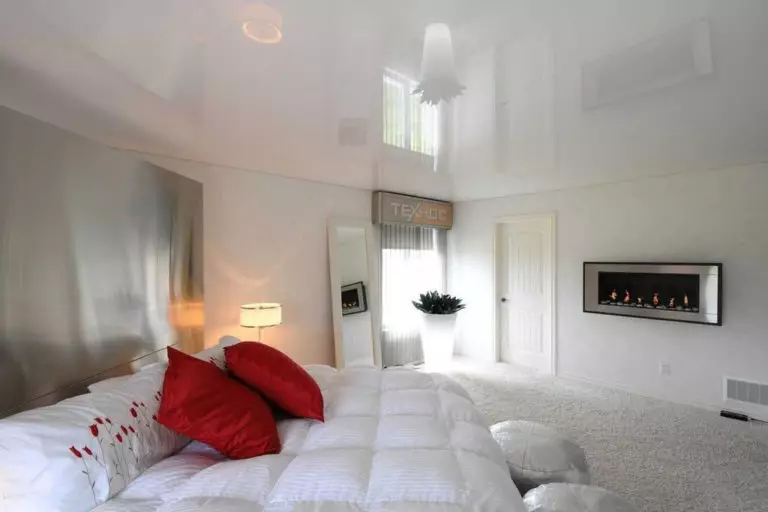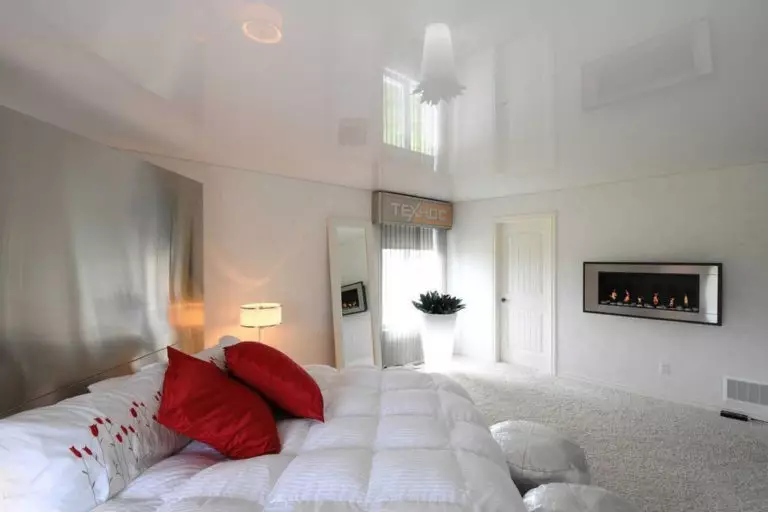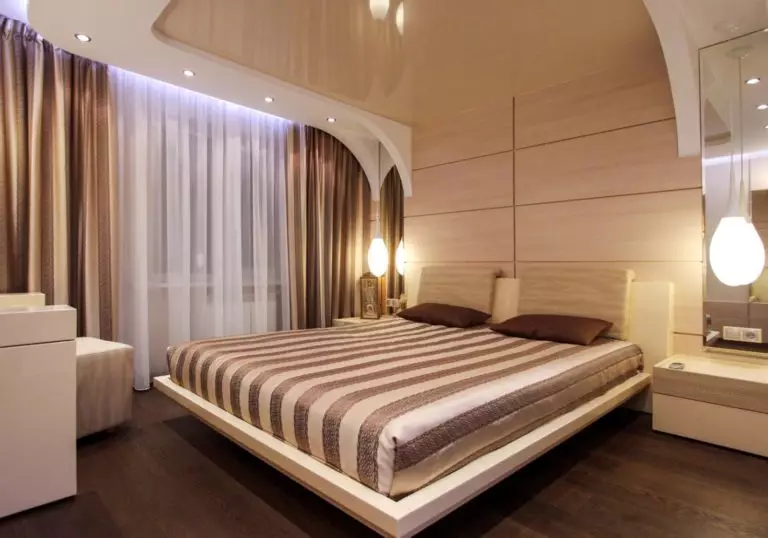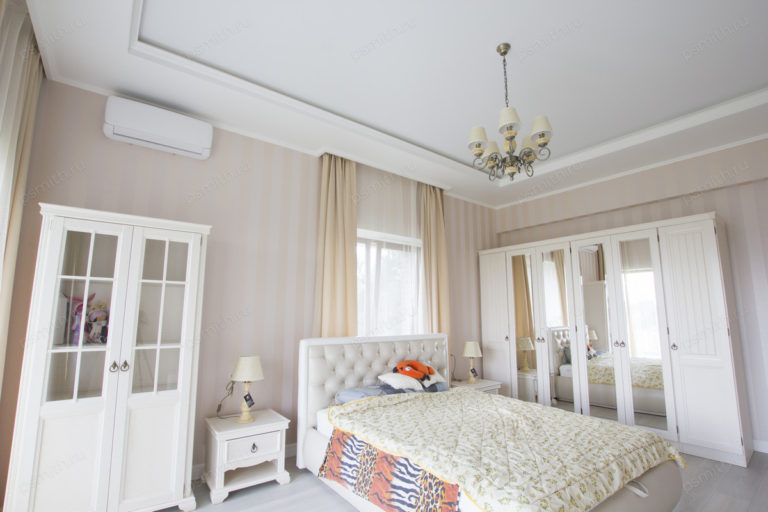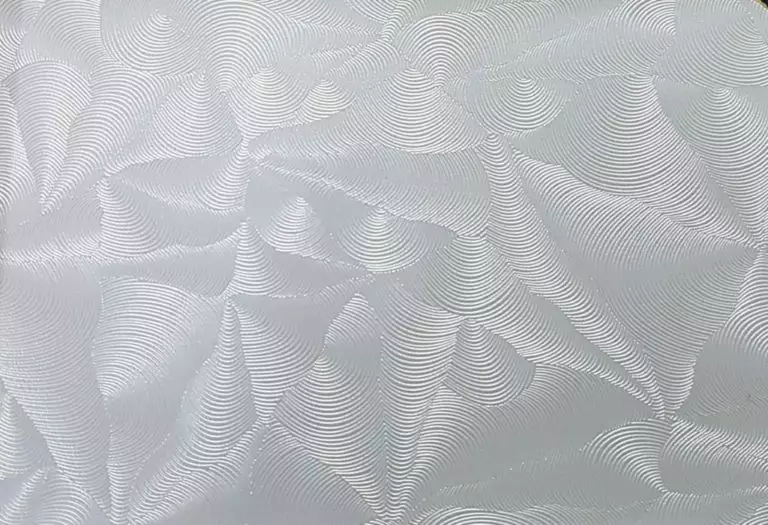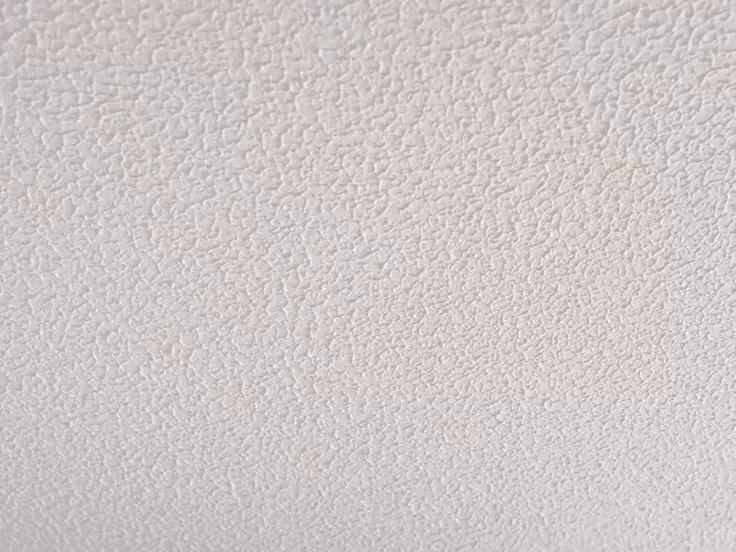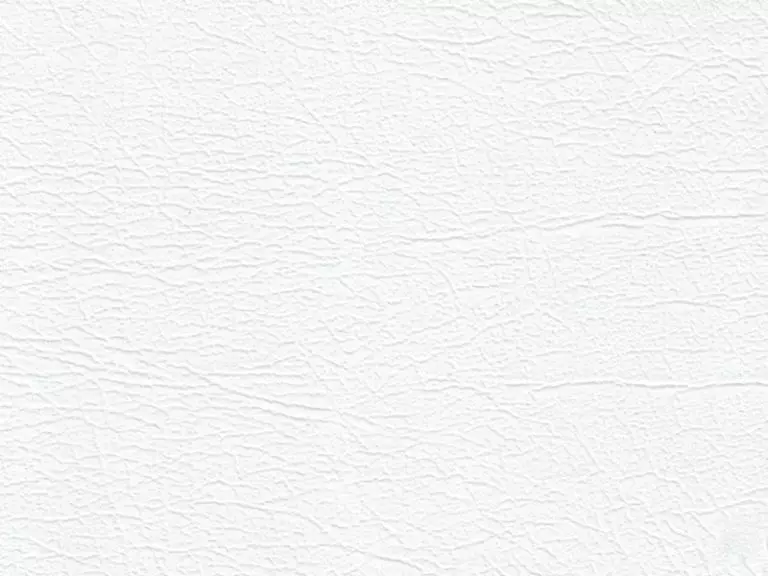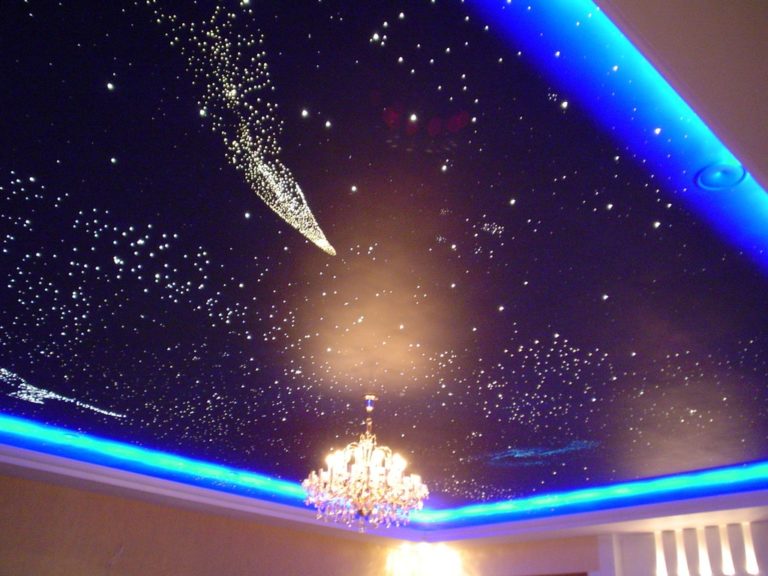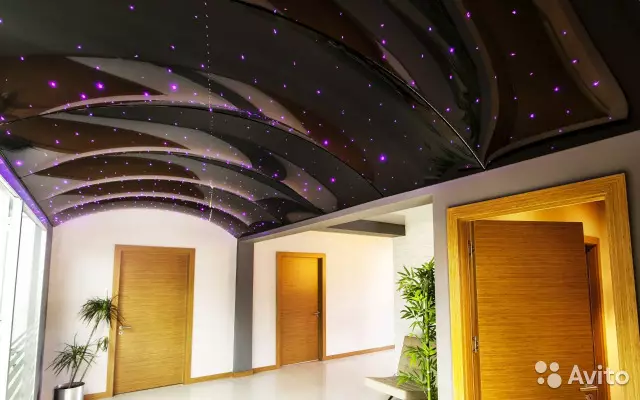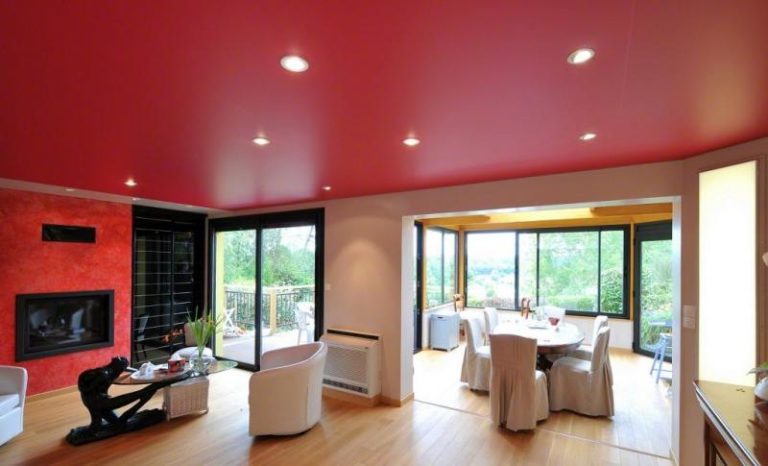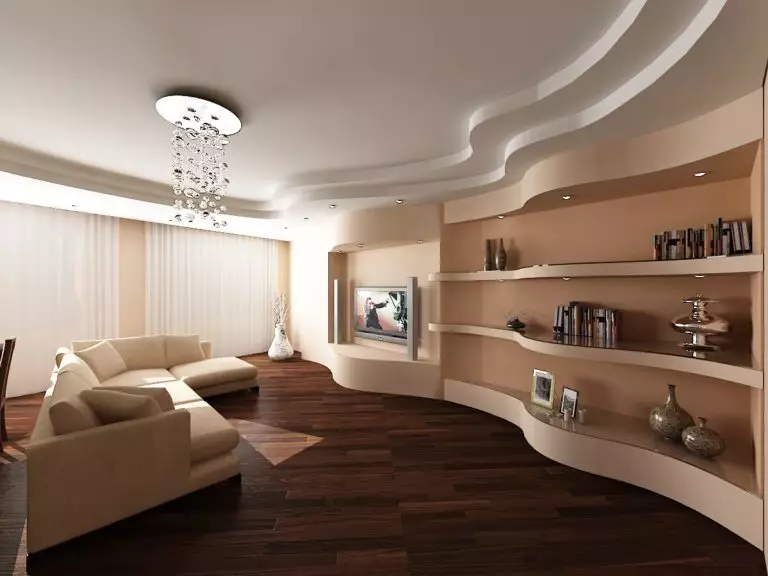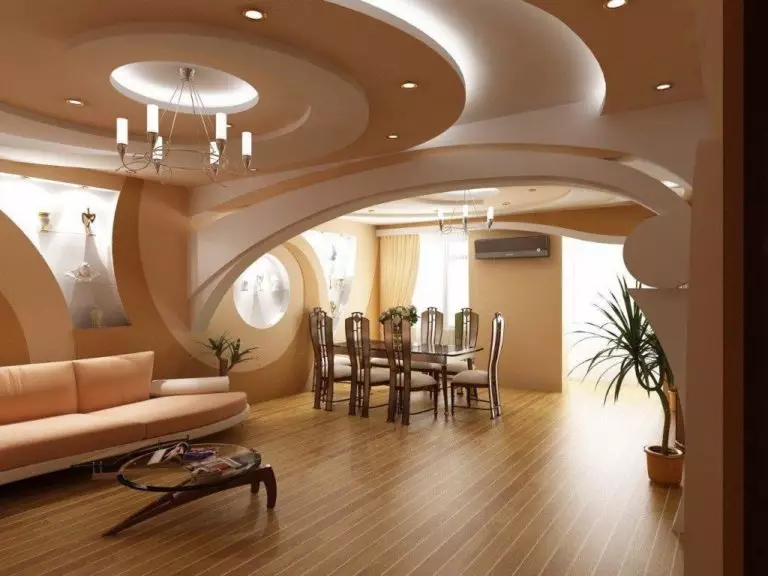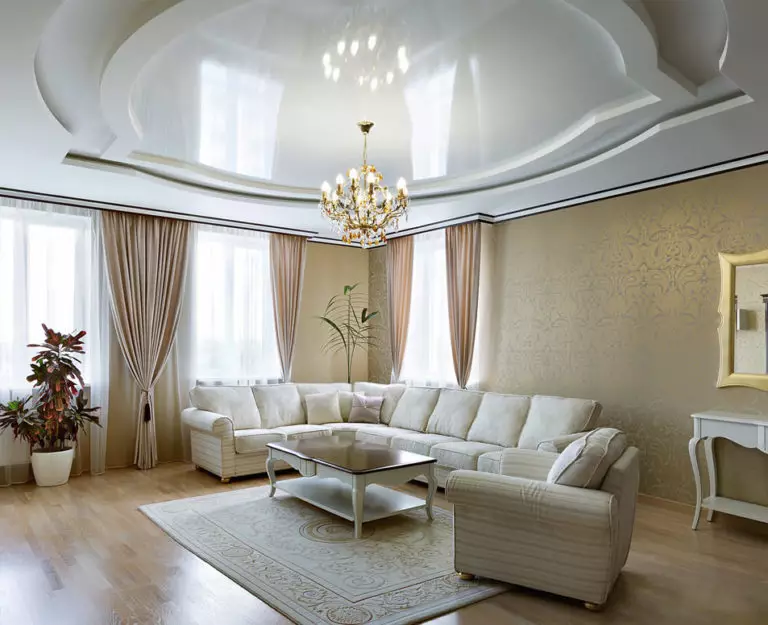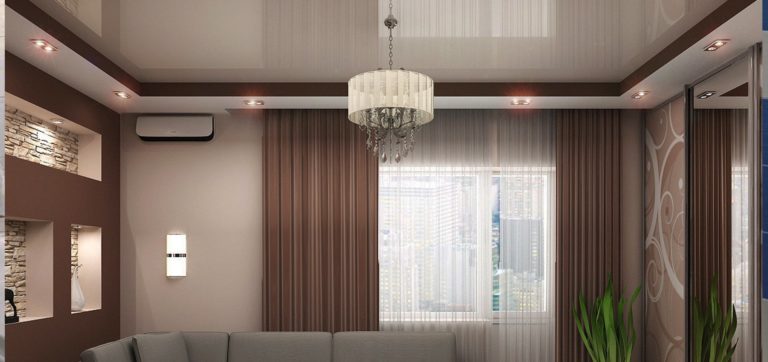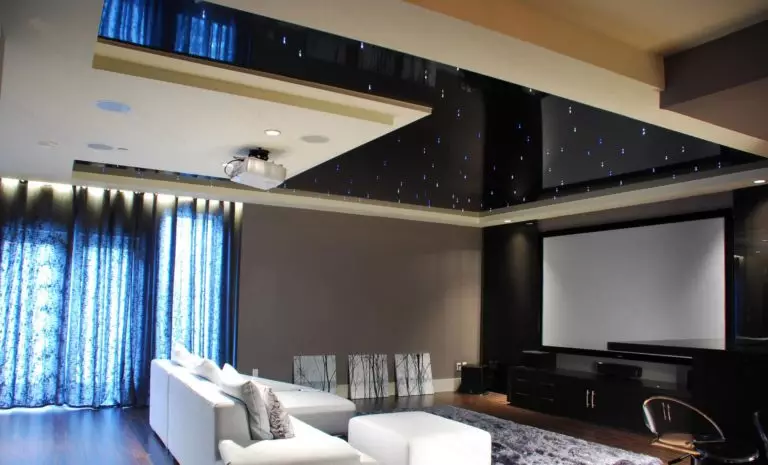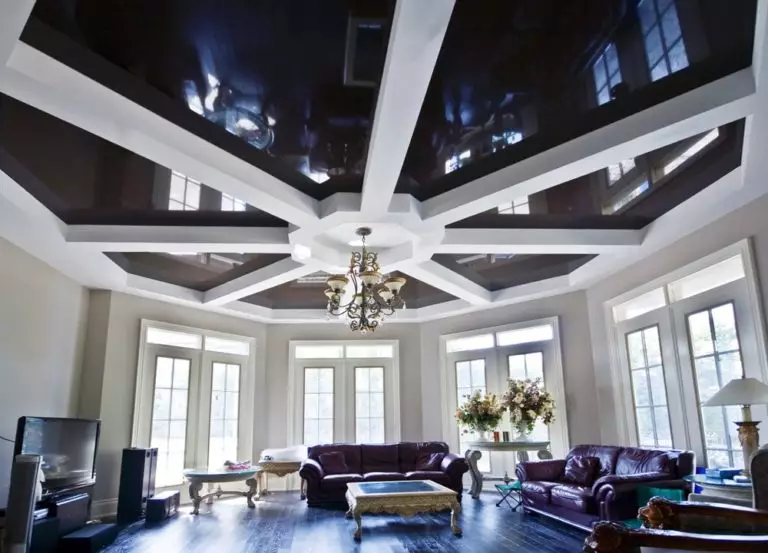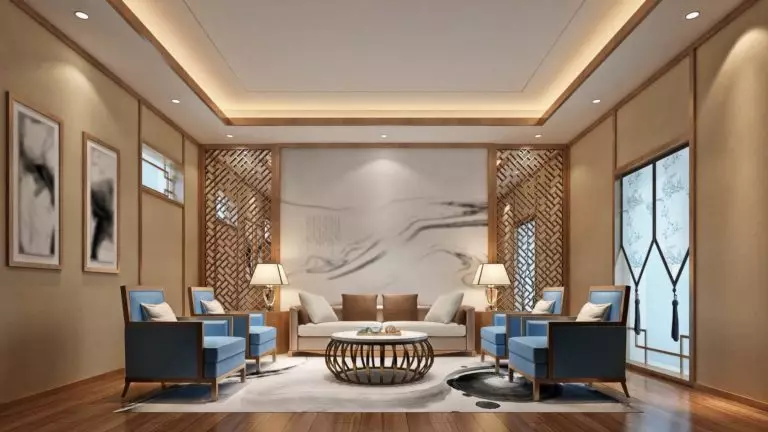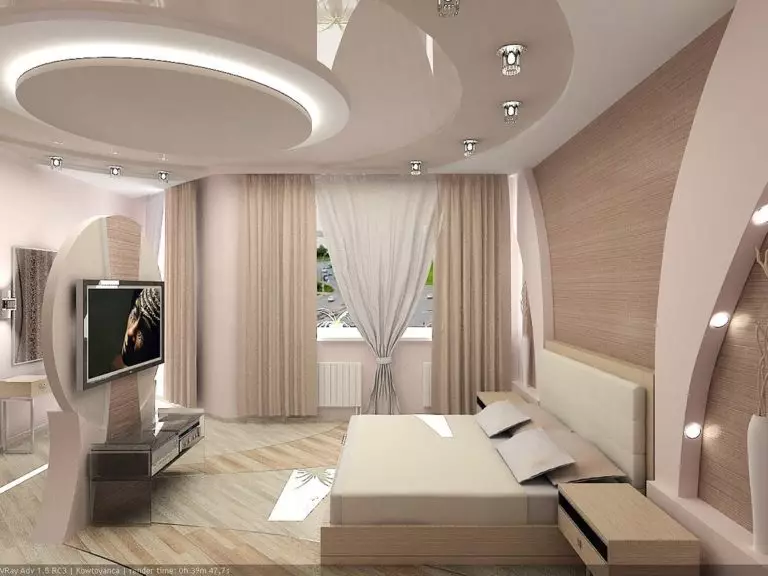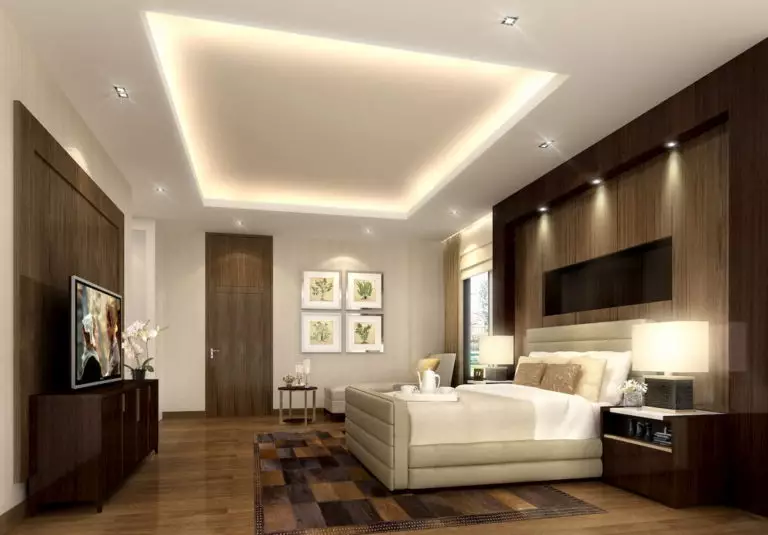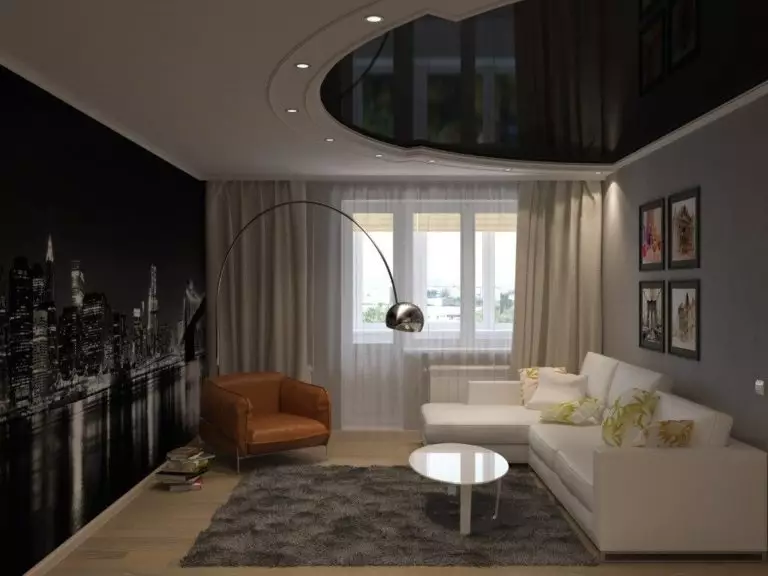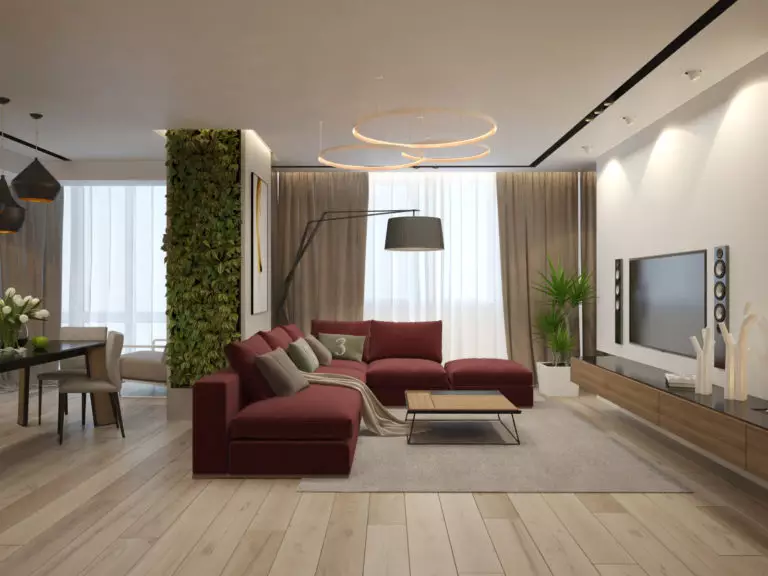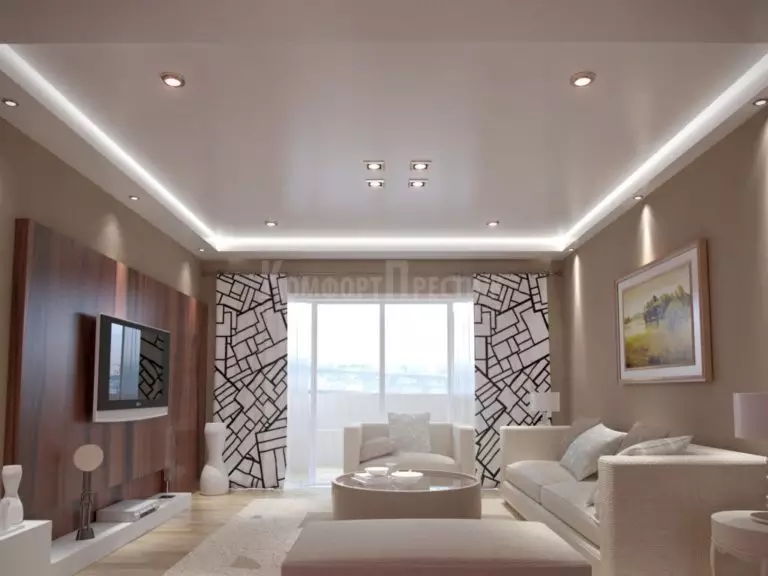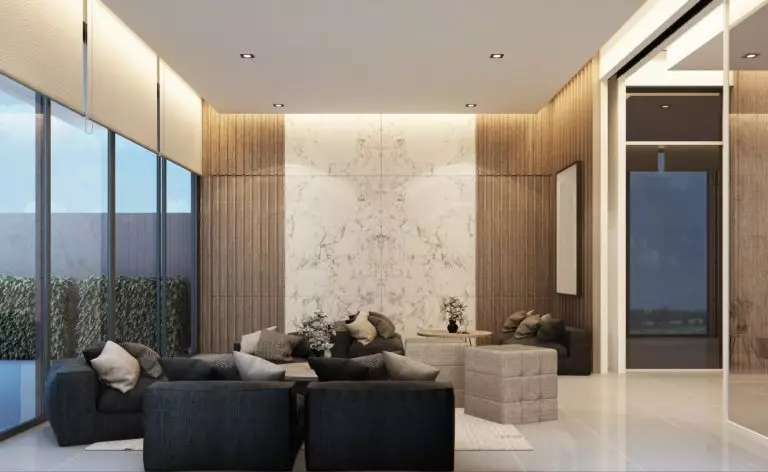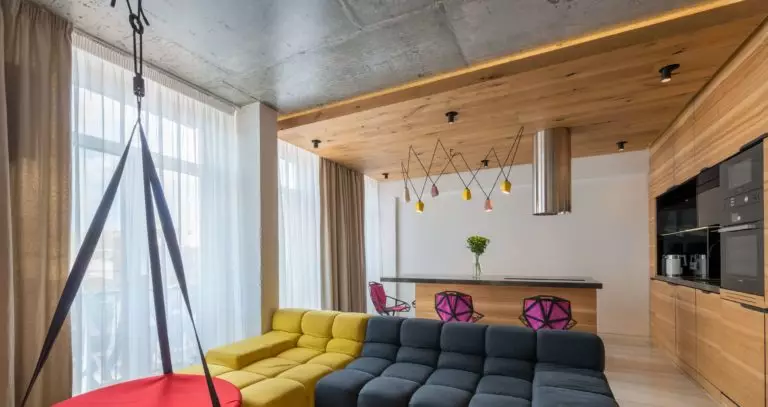Stretch ceiling: features, pros and cons, and design ideas
Stretch ceilings are unique for their ability to transform a space into something special. With this type of ceiling, you can create a unique interior design. Such structures can be seen not only in apartments but also in offices, hotels, restaurants, fitness centers, shops. It is not surprising because the combination of aesthetic appeal, ease of installation, wide color palette, and variety of materials make them more in demand. What are the pros and cons of using a stretch ceiling structure in the interior? About this and not only – further in the article.
What is a stretch ceiling?
Stretch ceiling is a special fabric stretched under the ceiling and secured with plastic or metal profiles. This mounting technology allows you to create a perfectly flat high-quality surface, almost impossible to achieve with any other coatings.
Structural elements of stretch ceilings are:
- Polyvinyl chloride (PVC) fabric or special textile fabric. The variety of textures and color palette forms a volumetric or flat surface on the ceiling.
- Baguettes that securely fix the fabric.
- Plugs and inserts with which the baguettes are joined together.
- Lighting.
Stretch ceiling pros
Stretch ceilings create a perfectly flat surface, have excellent sound insulation, moisture resistance, and are also very easy to clean: just wipe the surface with a damp soapy sponge. Due to their antistatic properties, they do not collect dust, which is very important in medical institutions, cafes, and restaurants.
Besides, such coatings have several other advantages:
- Installation of a simple stretch ceiling will only take a few hours. And this is much less than any other ceiling structure, including drywall. For complex false ceilings, installation can take up to two days. Moreover, unlike painting, a stretch ceiling does not need a perfect leveling of the base, which requires a lot of money and time;
- If electricity repair is required, the fabric is quite simply dismantled, and after work, it easily returns to its original position;
- Stretch ceilings have a great advantage when installing in new buildings. The surface does not react to the shrinkage of the building and other changes in its structure, and in the event of a leak, the ceiling can withstand up to 100 kg per 1 square meter;
- The design of the stretch ceiling allows you to hide all communications.
- The installation technology provides for a minimum of debris so that such ceilings can be installed last;
- The abundance of colors and textures allows you to realize the most daring design ideas. The color does not fade over time.
Stretch ceiling cons
Stretch structures also have negative aspects:
- Under the influence of temperatures above 65°, the surface becomes soft and usually sags;
- With prolonged exposure to heat on the fabric, it can lose its performance properties. This is important to consider when choosing lighting;
- The stretch ceiling limits the possibilities of stucco decoration;
- PVC is a rather fragile material and can be easily damaged. It is also synthetic, so it is recommended to buy the product from reliable manufacturers who use only proven, high-quality, and environmentally friendly materials in their production. Poor quality products can contain harmful toxins and dyes.
- Stretch ceilings are not always appropriate in rooms with complex shapes. Often, experts are faced with the problem of ceiling shaking or sagging.
Design features
Stretch ceilings can be conditionally classified according to the following indicators:
Material
- PVC film ceilings. There are seamless and welded. The maximum width is 5 m, but the canvas can stretch up to 21 feet (6.3 m), depending on the fastening method, room configuration, etc.
- Fabric. A textile fabric with special impregnation installed without heating. Unlike PVC film, the fabric is air permeable, and the polymer coating provides durability and moisture resistance. Such stretch ceilings are only seamless, and their maximum width is 16.5 feet (4.95 m).
Among these two options, as a rule, the buyer chooses fabric more often, believing that it is more natural. In fact, if both are high-quality materials, then the ceiling is harmless.
Texture
PVC film surfaces can be glossy, matte, satin, translucent, or mirror. Which finish is better – matte or glossy? When choosing, it is better to focus not on the picture’s attractiveness but on the desired result.
Glossy ceilings are often used in small rooms to visually enlarge the space, which is essential for small apartments. Matt is a more versatile solution in interiors. Unlike glossy, this surface does not reflect objects. Its front part resembles a painted concrete slab. This ceiling goes well with various types of decorative coatings.
The satin ceiling looks like a matte ceiling but is less textured. Depending on the lighting, it can change its shade – from colder during the day to slightly iridescent in the evening.
The difference in fabric ceilings is due only to the weaving of threads.
Colour
Both PVC ceilings and fabric surfaces are presented in many shades – from pastel to deliberately bright. PVC film can also be painted, for example, in the color of the walls, and photo printing can be applied to the canvas. As a rule, photo printing is not used for all ceiling coverings but individual sections of multi-tiered structures.
Thanks to modern technology, absolutely any artistic drawing can be applied to the film. It can be a laconic decorative pattern, a starry sky, or even full-fledged floral images. Designers often make designs with the effect of wood, metallic, marble, and also use other original solutions.
Which ceiling is better – white or tinted? It is impossible to answer this question unequivocally. It all depends on the design project. Of course, white ceilings are the most popular, but colored ones are also common.
Mounting type
Thanks to modern technology, stretch ceilings can be installed in different ways:
- One or more levels. A single-level ceiling covering does not differ from bleached or painted, but at the same time, it remains perfectly flat and smooth. A multi-level ceiling allows you to solve both practical problems (for example, to hide communications) and decorative (it is beneficial to zone space).
- With and without illumination. Stretch structures will be appropriate with any type of lighting. It is essential to decide in advance on the place and type of lighting. Areas for curtain rods, niches, and lamps need to be thought out even before installing the ceiling: after that, it will be impossible to do this.
- With or without skirting boards. At the same time, you can choose absolutely any type of skirting board – wooden, plaster, modern or classic. You should focus on the style of the interior. But keep in mind: the design will look impressive only with the quality work of a pro. The ridiculous joints of the baseboards will only spoil the impression of the interior.
- With or without slit. The gapless stretch ceiling is tightly adjacent to the wall; in the second version, a small gap is assumed. In the second case, the effect of “floating” ceilings is created using a particular profile. Their advantage is not only in their bewitching form but also in the ability to re-glue the wallpaper or repaint the wall without dismantling the ceiling.
Lighting options
The design of stretch ceilings allows for a variety of lighting scenarios. You can easily mount all lighting types in them: built-in, overhead lamps, LED strips, slot systems, track, dimensional chandeliers. Let’s consider the most popular solutions.
- Spotlights. A wide assortment makes it possible to choose an option for any style and taste. The products can be of different sizes, shapes, configurations, embedded, or overhead. Installation is carried out as follows: the structure is hidden behind the cover, a lamp is built-in, and it is closed from above with a flat shade.
- Chandelier. Any type of chandelier is suitable for stretch ceilings. A series of compact pendant lamps will look beautiful in a modern interior, and a large chandelier in a classic one. Beforehand, it is worth considering the placement.
- LED Strip Light. Hidden backlighting is useful for creating an appropriate ambiance and decor. It can be run around the perimeter or designate individual accents of a multi-level structure. And if hidden behind the frame, there will be a floating ceiling effect.
It is better to entrust the installation of stretch structures and lamps to trusted professionals. Residents often complain about gaps around lighting fixtures due to shoddy installation work.
Stretch ceilings in the interior: Conclusions + Photo gallery
Stretch ceilings in the interior are a popular topic of controversy: someone considers them a relic of the past or allows them only in separate rooms, such as a dressing room or a bathroom. And someone is convinced that such a ceiling is no less relevant among other options, and construction technology should not be distinguished by categories of taste and aesthetic meanings. The main thing is to make the right choice, focusing on the individual characteristics of each interior.
